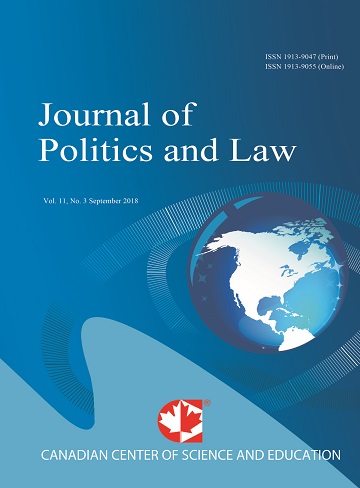Verbal Politeness as an Important Tool of Diplomacy
- Venera Nagimovna Yapparova
- Juliya Viktorovna Ageeva
- Adamka Pavol
Abstract
This article examines the notion of diplomatic courtesy and analyzes the ways of its language expression in Russian diplomatic discourse on the example of the speeches delivered by the Minister of Foreign Affairs of the Russian Federation Sergey Lavrov.
Diplomatic courtesy is considered by the authors as an integral part of the diplomatic language, which, being a component of the official business style, is characterized by standardization, normalization, lack of emotionality and neutrality. At the same time, the diplomatic language allows the use of language means that are not regulated by the diplomatic protocol, which act as euphemisms and allow expressing opinions on acute political problems without violating the existing rules of diplomatic communication.
The success of diplomatic communication is achieved with the help of universal speech formulas that serve as a means of manifesting courtesy and correspond to the standards of diplomatic communication. Such speech formulas themselves do not have legal force, but they have great moral and political power, since they contribute to the regulation of the nature of relations between countries.
The article shows that diplomatic courtesy can be both positive and negative. The degree of courtesy in a diplomat's speech may depend on a wide range of various factors conditioned by the dependence of diplomatic etiquette on the specifics of interaction between communicants.
Based on the results of the conducted research, the authors came to the conclusion that during various meetings the Minister of Foreign Affairs uses the following verbal means - speech formulas of greeting, address, compliment, invitation, gratitude, condolence, farewell. The frequency of such speech formulas is explained by the need of abidance of an international protocol that prescribes to diplomatic staff a certain sequence of verbal and non-verbal actions.
- Full Text:
 PDF
PDF
- DOI:10.5539/jpl.v12n5p57
Journal Metrics
h-index (2017): 14
i10-index (2017): 39
h5-index (2017): 9
h5-median (2017): 11
Index
- Academic Journals Database
- ACNP
- ANVUR (Italian National Agency for the Evaluation of Universities and Research Institutes)
- Berkeley Library
- CNKI Scholar
- COPAC
- CrossRef
- DTU Library
- EBSCOhost
- Elektronische Zeitschriftenbibliothek (EZB)
- EuroPub Database
- Excellence in Research for Australia (ERA)
- Genamics JournalSeek
- GETIT@YALE (Yale University Library)
- Ghent University Library
- Google Scholar
- Harvard Library
- HeinOnline
- INDEX ISLAMICUS
- Infotrieve
- Jisc Library Hub Discover
- JournalGuide
- JournalTOCs
- LOCKSS
- MIAR
- Mir@bel
- NewJour
- Norwegian Centre for Research Data (NSD)
- Open J-Gate
- PKP Open Archives Harvester
- Publons
- Pubmed journal list
- RePEc
- ROAD
- Scilit
- SHERPA/RoMEO
- Standard Periodical Directory
- Stanford Libraries
- UCR Library
- Ulrich's
- UniCat
- Universe Digital Library
- UoS Library
- WorldCat
- Zeitschriften Daten Bank (ZDB)
Contact
- William TaiEditorial Assistant
- jpl@ccsenet.org
